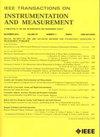Cascading Time-Frequency Transformer and Spatio-Temporal Graph Attention Network for Rotating Machinery Fault Diagnosis
IF 5.6
2区 工程技术
Q1 ENGINEERING, ELECTRICAL & ELECTRONIC
IEEE Transactions on Instrumentation and Measurement
Pub Date : 2024-09-03
DOI:10.1109/TIM.2024.3453312
引用次数: 0
Abstract
Rotating machinery fault diagnosis is of great importance to guarantee safe and optimal operations of industrial processes. Heavy noise and dynamic behaviors usually make accurate mechanical fault diagnosis impossible while using the standard methodologies, particularly when they disregard specific domain information related to time, frequency, or space. To address these challenges, we propose a novel model, called spatio-temporal-frequency graph attention network (STFGAT), which can integrate time domain, frequency domain, and spatial information. The model leverages the Transformer to encode time and frequency information, then refined complex patterns in the time and frequency domain through self-attention mechanism and frequency domain attention, and finally captures the hidden patterns behind the data through the collaboration of time and frequency information. The encoded information is subsequently fed into the spatio-temporal graph attention network (STGAT) to allow the model to take full use of the spatial relationships between different components of the mechanical system and the temporal relationships across various time lags. This process improvement can learn complex patterns and relationships within the data, thereby facilitating predictions regarding the system’s state. The experimental results show that STFGAT outperforms other standard diagnostic models in the case studies and can achieve better diagnostic accuracy.用于旋转机械故障诊断的级联时频变压器和时空图注意网络
旋转机械故障诊断对于确保工业流程的安全和最佳运行非常重要。严重的噪声和动态行为通常使得使用标准方法无法进行准确的机械故障诊断,特别是当这些方法忽略了与时间、频率或空间相关的特定领域信息时。为了应对这些挑战,我们提出了一种名为时空-频率图注意力网络(STFGAT)的新型模型,它可以整合时域、频域和空间信息。该模型利用变换器对时间和频率信息进行编码,然后通过自我注意机制和频域注意提炼时域和频域中的复杂模式,最后通过时间和频率信息的协作捕捉数据背后隐藏的模式。编码信息随后被输入时空图注意力网络(STGAT),使模型能够充分利用机械系统不同组件之间的空间关系和不同时滞的时间关系。这一过程的改进可以学习数据中的复杂模式和关系,从而促进对系统状态的预测。实验结果表明,在案例研究中,STFGAT 的表现优于其他标准诊断模型,并能达到更高的诊断精度。
本文章由计算机程序翻译,如有差异,请以英文原文为准。
求助全文
约1分钟内获得全文
求助全文
来源期刊

IEEE Transactions on Instrumentation and Measurement
工程技术-工程:电子与电气
CiteScore
9.00
自引率
23.20%
发文量
1294
审稿时长
3.9 months
期刊介绍:
Papers are sought that address innovative solutions to the development and use of electrical and electronic instruments and equipment to measure, monitor and/or record physical phenomena for the purpose of advancing measurement science, methods, functionality and applications. The scope of these papers may encompass: (1) theory, methodology, and practice of measurement; (2) design, development and evaluation of instrumentation and measurement systems and components used in generating, acquiring, conditioning and processing signals; (3) analysis, representation, display, and preservation of the information obtained from a set of measurements; and (4) scientific and technical support to establishment and maintenance of technical standards in the field of Instrumentation and Measurement.
 求助内容:
求助内容: 应助结果提醒方式:
应助结果提醒方式:


